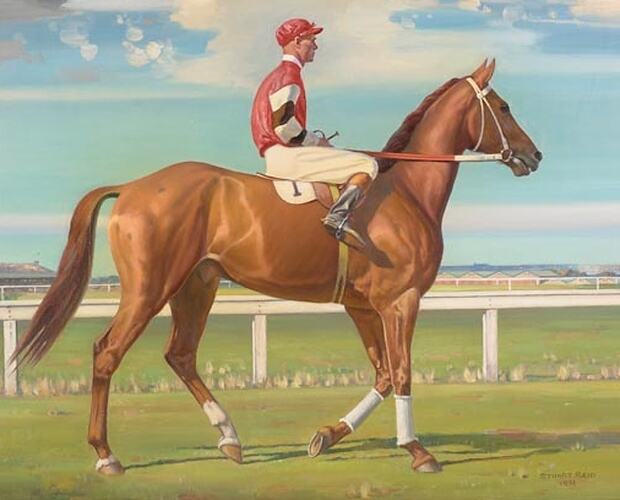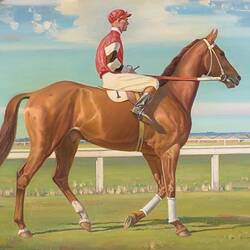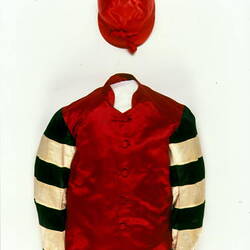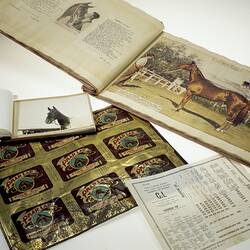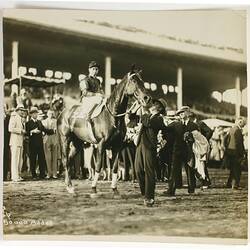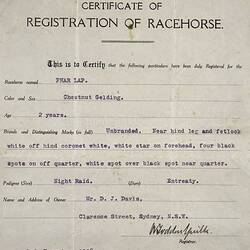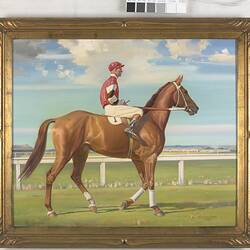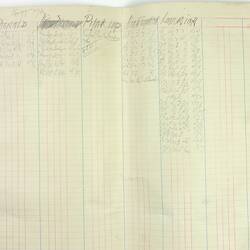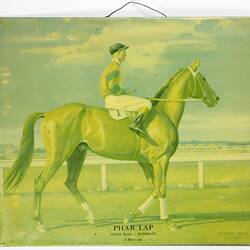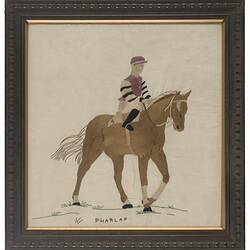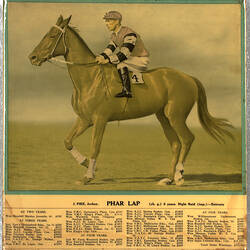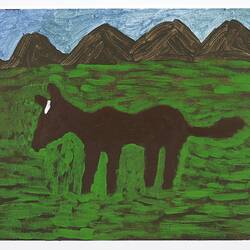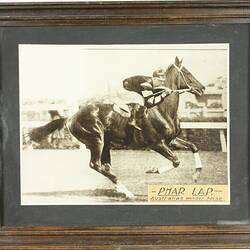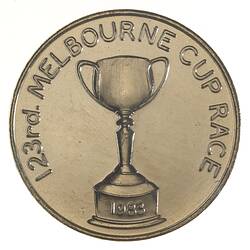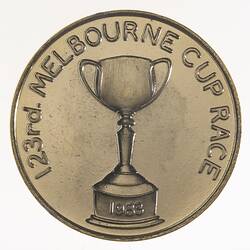Jim Pike was so renowned as a jockey that even to this day racing experts and punters often say of a jockey that he 'rode it like J. Pike'. He is best-known for his partnership with Phar Lap, on whom he won 27 races from 30 rides. The pair combined to win the 1930 Melbourne Cup. Pike also won two Caulfield Cups, six VRC Derbies (four of these in a row) and two Cox Plates.
Born on 4 September 1892, in Newcastle, New South Wales, James Edward Pike was the eldest child of Charles Pike, a Newcastle-born butcher and later racecourse attendant, and his Victorian wife Jane Isabella, née Liddell. As a boy Jim took an early interest in horses often playing truant from school to go riding. He joined Ernie Connors' stables at the age of 12, weighing under four stone (25 kg), and had his mount in a race soon afterwards. Banned twice for being under age, in 1906 he was apprenticed to the Sydney trainer William Kelso. He rode his first winner at the age of thirteen, in July 1906, and at the age of fifteen rode Welcome Jack to third place in the Caulfield Cup. By February 1908 he had ridden some forty winners. Bill Kelso was so impressed by Pike's performance, that he offered to take him to England in 1908. There Pike rode 17 races for just 2 wins and 5 placings, but managed to impress Lord Carnarvon, a leading horse owner. After a few months Pike returned to Australia, where he completed his apprenticeship with Bill Kelso at Randwick. In October 1910, aged eighteen, he won his first major race when he rode Beverage to victory in the Victoria Derby at Flemington.
Pike was a cool-headed jockey who showed style, perfect balance and sure hands in the saddle. He was known for getting the best ride possible out of a horse while rarely resorting to using the whip. Being one of Australia's finest jockeys, he was offered more races on top horses than anyone else. Known for his honesty, he claimed a strong following among punters and like Phar Lap gained many loyal fans from his success during the Depression years. It was claimed that he was offered large sums of money to stop Phar Lap winning some major races, and his refusal certainly contributed to Phar Lap's outstanding success.
From his share of winnings Pike became a very wealthy man, but a gambling habit left him broke only six months after retirement in April 1936. He died in 1969, impoverished but honest, and held in high public esteem. He was inducted into the New South Wales Hall of Champions at Homebush Bay on 25 August 1999 and into The Australian Racing Hall of Fame in Melbourne on 30 June 2002.
Related Resources:
Phar Lap - the Story of Australia's Wonder Horse
Phar Lap Infosheet
References:
Reason, Michael, 2005, Phar Lap: A True Legend, Museum Victoria, Melbourne (revised edition 2009).
Molony, John N., 'Pike, James Edward (Jim) (1892-1969)', Australian Dictionary of Biography Online Edition, http://adbonline.anu.edu.au/biogs/A110237b.htm.
Australian Racing Hall of Fame website http://www.racingvictoria.net.au/p_Hall_of_Fame.aspx.
NSW Hall of Champions website http://www.sydneyolympicpark.com.au/Visiting/recreational_activities/nsw_hall_of_champions.
More Information
-
Keywords
-
Localities
-
Authors
-
Article types
